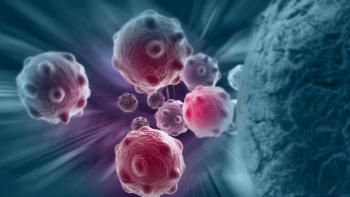
- Oncology Vol 29 No 4_Suppl_1
- Volume 29
- Issue 4_Suppl_1
(P043) Central Neurocytoma: Impact of Resection Extent and Adjuvant Radiotherapy on Survival Outcomes
Adjuvant RT was delivered to a minority of CNC patients after either GTR or STR in this national database, though patients were more likely to receive RT after STR. Long-term OS was excellent for all subgroups, and there was no clear evidence of resection extent or adjuvant RT influencing survival outcomes. Since our database is subject to selection bias and limited by a lack of information regarding local recurrence, salvage therapies, exact extent of STR, and RT technique, further research is needed to validate our findings.
Yi An, MD, Yu B. James, MD, Jiang Wen, MD, PhD, Henry S. Park, MD, MPH; Yale University School of Medicine; UT MD Anderson Cancer Center
INTRODUCTION: Central neurocytoma (CNC) is an uncommon benign/borderline malignant tumor of the central nervous system that often causes symptoms due to extension into the ventricular system. Maximal surgical resection is the standard of care, but indications for adjuvant radiotherapy (RT) are unclear. Our goal was to analyze the impact of resection extent and adjuvant radiotherapy on survival outcomes using a population-based CNC dataset.
METHODS: We identified all patients in the Surveillance, Epidemiology, and End Results (SEER) database diagnosed with CNC (ICD-O-3 histology code 9506-1) in 2004–2011. Only those who received gross total resection (GTR) and subtotal resection (STR) were included. Chi-square analysis assessed the associations between demographic/clinical characteristics and the utilization of GTR and RT. Overall survival (OS) outcomes were analyzed using Kaplan-Meier analysis and the log-rank test.
RESULTS: We included 203 patients, with a median age of 31 years; 46% of patients were male, and 80% of patients were white. GTR was performed in 47% of patients, with the remainder receiving STR. Adjuvant RT was delivered to 15% of patients, including 9% after GTR and 20% after STR (P = .018). Age, sex, race, diagnosis year, World Health Organization (WHO) grade, and tumor size were not significantly associated with GTR or RT utilization. OS was 87% at 5 years for all patients, with a median follow-up of 39 months. There was no significant OS benefit with GTR compared with STR (89% vs 86%; P = .82). There was also no significant OS benefit with RT after either GTR (86% with RT vs 90% without RT at 5 years; P = .76) or STR (79% with RT vs 89% without RT at 5 years; P = .53).
CONCLUSION: Adjuvant RT was delivered to a minority of CNC patients after either GTR or STR in this national database, though patients were more likely to receive RT after STR. Long-term OS was excellent for all subgroups, and there was no clear evidence of resection extent or adjuvant RT influencing survival outcomes. Since our database is subject to selection bias and limited by a lack of information regarding local recurrence, salvage therapies, exact extent of STR, and RT technique, further research is needed to validate our findings.
Proceedings of the 97th Annual Meeting of the American Radium Society -
Articles in this issue
Newsletter
Stay up to date on recent advances in the multidisciplinary approach to cancer.

















































































